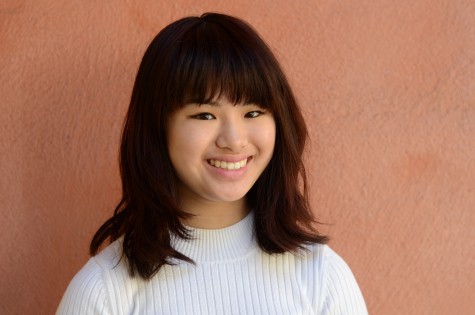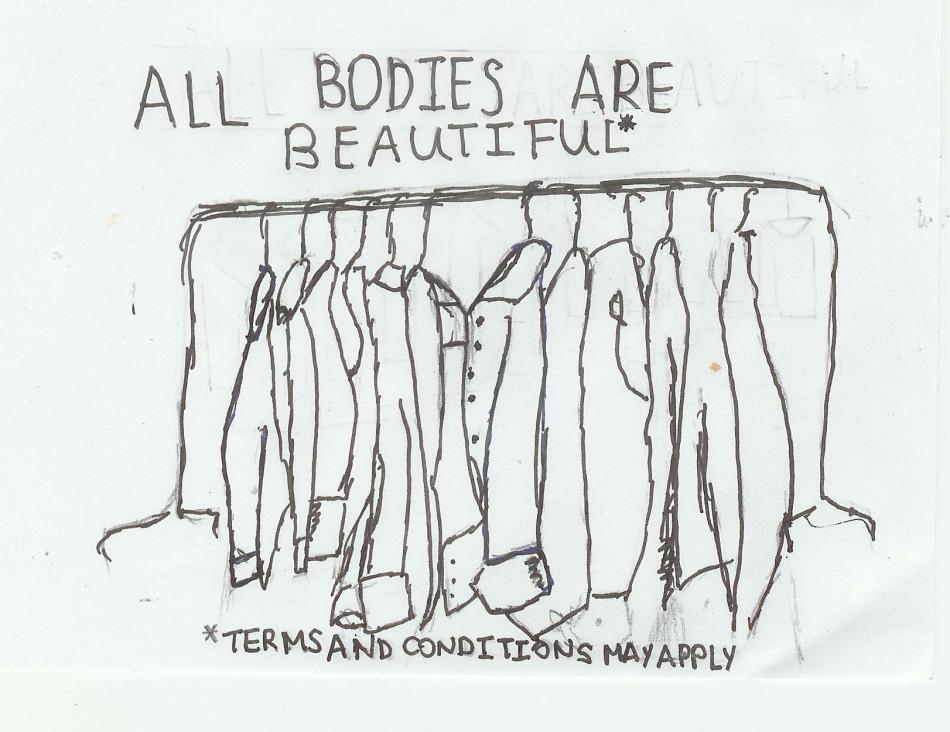Read it Or Weep: Saying No to the Say No to Size Zero (Extended Edition)
Skinny-Shaming – (n.) the act of abashing thinner people, regardless of gender, because of their build.
There has been significant attention drawn to the “Say No To Size Zero” campaign. Founded by model Katie Green, the petition aims to “stop all size zero models and models with an unhealthy BMI (below 18.5) from the fashion catwalks.”
To say that skinniness equates to unhealthiness is not always accurate. One’s body type, and Green’s selected measurement, Body Measure Index, often have little to do with the person’s health. A BMI less than 18.5 does not necessarily imply unhealthiness, or an eating disorder.
As much as I hate the lack of body type diversity on our fashion catwalks, the idea of banning all size zero models is beyond me.
We live in a Size Zero World. Being thin is equated with perfection, and unfortunately, there are many who take unhealthy means of becoming thin.
The Pro Anorexia (Pro Ana thinspiration trend especially takes the skinny-obsession to an extreme by promoting eating disorders. In a study in the American Journal of Public Health, 84 percent of the sites’ members endorse anorexia and 64 percent consider bulimia desirable. Over 80 percent of the sites share crash dieting techniques and recipes; members compete with each other at losing weight, or fast together in displays of solidarity.
When perfection is demanded as the standard, it’s uncommon to shame those who defy the norms. Now, the majority understands that fat-shaming is wrong. The public recognizes that no one should be disadvantage or ridiculed for being of a heavier weight. But what about the reverse: if fat-shaming isn’t okay, then why do we continue to skinny-shame?
I believe in diversifying the modeling industry, but in the midst of rebelling against the Size Zero World, we have forgotten those who naturally fit the body type.
Models like Katie Green are taking offense to the Size Zero models, accidentally antagonizing an entire group of people who cannot help the bodies they were born with. Say No to Size Zero and similar affiliates perpetuates yet another negative message: that skinnier models “had it easy.”
The fashion industry does have a bias when it comes to body diversity. According to Rader Program’s Statistics on the Media and Eating Disorders, fashion models weigh 23 percent less than the average woman. Even mannequins’ waist sizes hav decreased from 37 to 31 inches by 1990.
The quest to be thin deeply influences our youth. In a study completed by the National Association of Anorexia Nervosa and Associated Disorders, over half of teenage girls and boys resort to using unhealthy weight control behaviors like skipping meals, fasting, and smoking cigarettes. 69 percent of ten year old girls reported advertisement photos influenced their idea of perfection. In contrast, that “ideal” body type is only naturally possessed by five percent of American females.
Still, that five percents remains as a viable part of the population. Natural size zero women in the world do not deserve any more wrath than overweight women, or anyone else.
At the vanguard of our catwalks, models who possess healthy diverse body types should walk with confidence. Girls should have different and unique models in advertisements to associate themselves with, not a singular, media produced idea of beauty, regardless of her body type. Instead of judging each other for our body types, let’s support one another for our healthy, natural state. We should embrace diversity and love each other for who we are, without shaming others.

Kaity Gee (12) is the assistant Editor in Chief of Wingspan. Serving as a reporter for TALONWP freshman year, Kaity has written pieces for Winged Post...


















![“[Building nerf blasters] became this outlet of creativity for me that hasn't been matched by anything else. The process [of] making a build complete to your desire is such a painstakingly difficult process, but I've had to learn from [the skills needed from] soldering to proper painting. There's so many different options for everything, if you think about it, it exists. The best part is [that] if it doesn't exist, you can build it yourself," Ishaan Parate said.](https://harkeraquila.com/wp-content/uploads/2022/08/DSC_8149-900x604.jpg)




![“When I came into high school, I was ready to be a follower. But DECA was a game changer for me. It helped me overcome my fear of public speaking, and it's played such a major role in who I've become today. To be able to successfully lead a chapter of 150 students, an officer team and be one of the upperclassmen I once really admired is something I'm [really] proud of,” Anvitha Tummala ('21) said.](https://harkeraquila.com/wp-content/uploads/2021/07/Screen-Shot-2021-07-25-at-9.50.05-AM-900x594.png)







![“I think getting up in the morning and having a sense of purpose [is exciting]. I think without a certain amount of drive, life is kind of obsolete and mundane, and I think having that every single day is what makes each day unique and kind of makes life exciting,” Neymika Jain (12) said.](https://harkeraquila.com/wp-content/uploads/2017/06/Screen-Shot-2017-06-03-at-4.54.16-PM.png)








![“My slogan is ‘slow feet, don’t eat, and I’m hungry.’ You need to run fast to get where you are–you aren't going to get those championships if you aren't fast,” Angel Cervantes (12) said. “I want to do well in school on my tests and in track and win championships for my team. I live by that, [and] I can do that anywhere: in the classroom or on the field.”](https://harkeraquila.com/wp-content/uploads/2018/06/DSC5146-900x601.jpg)
![“[Volleyball has] taught me how to fall correctly, and another thing it taught is that you don’t have to be the best at something to be good at it. If you just hit the ball in a smart way, then it still scores points and you’re good at it. You could be a background player and still make a much bigger impact on the team than you would think,” Anya Gert (’20) said.](https://harkeraquila.com/wp-content/uploads/2020/06/AnnaGert_JinTuan_HoHPhotoEdited-600x900.jpeg)

![“I'm not nearly there yet, but [my confidence has] definitely been getting better since I was pretty shy and timid coming into Harker my freshman year. I know that there's a lot of people that are really confident in what they do, and I really admire them. Everyone's so driven and that has really pushed me to kind of try to find my own place in high school and be more confident,” Alyssa Huang (’20) said.](https://harkeraquila.com/wp-content/uploads/2020/06/AlyssaHuang_EmilyChen_HoHPhoto-900x749.jpeg)



